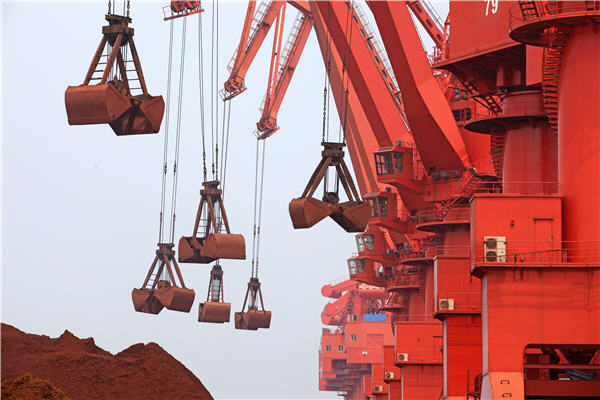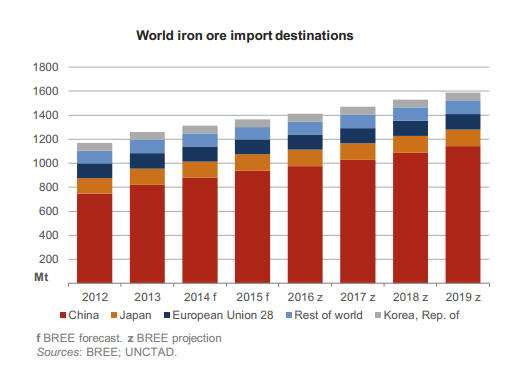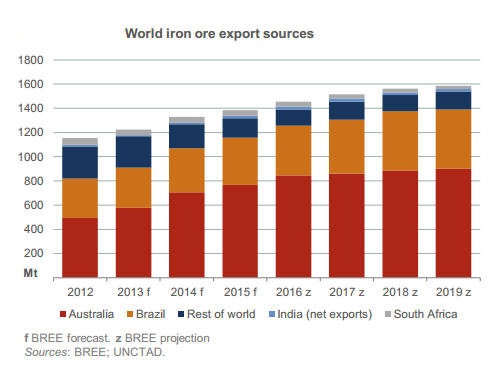 After attempting a comeback of sorts last week iron ore prices have come under pressure again this week.
After attempting a comeback of sorts last week iron ore prices have come under pressure again this week.
Benchmark Northern China 62% Fe imports tracked by The SteelIndex on Tuesday exchanged hands for $79.40 a tonne on Wednesday, the lowest price for the steelmaking raw material since September 7, 2009.
The price of seaborne iron ore has declined more than 40% this year as continuing worries about the Chinese economy and the flood of new supply dampen enthusiasm for the commodity.
However, estimates released Wednesday by the Australian government suggest growth in iron ore trading remains robust.
The country’s commodity forecaster, the Bureau of Resource and Energy Economics, says the global iron ore trade will expand to 1.33 billion tonnes this year, an 8.4% jump.
The pace will moderate somewhat next year to 4.2% growth to 1.38 billion tonnes. Over the next five years world trade in the steelmaking raw materials is projected to increase at an average annual rate of 2.9% to reach a total of 1.6 billion tonnes in 2019.

Source: Bureau of Resource and Energy Economics
In 2015 China’s iron ore imports are forecast to increase a further 6.6% to total 933 million tonnes and continue growing at 4.7% annual pace to reach 1.12 billion tonnes in 2019.
Top exporting countries Brazil and Australia are expected to increase their share of the global trade at the expense of Ukraine, South Africa and Iran, while India is likely staying on the sidelines with just 21 million tonnes of net exports by 2019.

Source: Bureau of Resource and Energy Economics
After lagging in recent years, growth in exports from Brazil will outpace that of Australia. Number one iron ore miner Vale’s home base will expand exports at an annual rate of 6% reaching 489 million tonnes in 2019.
Export growth is expected to come from expansions to existing mines and the completion of Vale’s 90 million tonne capacity Serra Sul mine in the Carajas region. Vale expects the development of its Serra Sul mine along with increased use of the Valemax bulk freighter to double its shipments to China in the next five years.
4 Comments
Brian R. McCaughrin
Excellent News Vale!
Brian
I see that North American exports are forecasted to drop as ore from cheaper CPT sources expand. Is Casablanca on the right track, wishing to sell off iron ore mines that rely on offshore clients and keeping those who satisfy local demand?
Jae Park
Resources are limited, so miners should sell resource
products at prices of over the average production cost for the best benefits of
the companies, shareholders and countries.
If we consider the world demand supply of iron ores, big
four producers production volumes and junior producers average production costs,
iron ore (Fe 61.5%) price should be at the range of between U$80 and U$120 per
dry metric tonne.
The big four should sell iron ores by the contracts only and
should not sell ores at the spot markets for the purpose of dropping the iron
ore price down intentionally.
Michael Thompson
Can’t help but feel that if your investing in iron ore companies anywhere in the world you are guaranteed to lose money. With prices dropping and the large miners going full bore to increase production you are looking at abysmal pricing for at least the next 5 years.
If I remember correctly that is the average length of a commodity free fall. Please correct me if I’m wrong with any links to documentation about average lengths. Thanks.